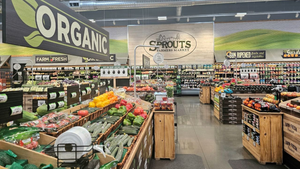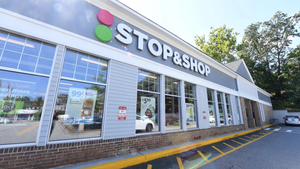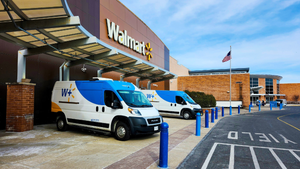KROGER INSTALLS OPTIMAL'S 5000TH SELF-CHECKOUT UNITKROGER INSTALLS OPTIMAL'S 5000TH SELF-CHECKOUT UNIT
CINCINNATI -- Self-checkout took another step toward the supermarket mainstream this month as Optimal Robotics, Montreal, installed its 5,000th unit in a Kroger store in South Garden City, S.C.The installation is part of an aggressive rollout of Optimal's U-Scan self-checkout system by Kroger, which now has it in over 600 stores, said Kroger corporate spokesman Gary Rhodes.The retailer is expected
May 21, 2001
DAN ALAIMO
CINCINNATI -- Self-checkout took another step toward the supermarket mainstream this month as Optimal Robotics, Montreal, installed its 5,000th unit in a Kroger store in South Garden City, S.C.
The installation is part of an aggressive rollout of Optimal's U-Scan self-checkout system by Kroger, which now has it in over 600 stores, said Kroger corporate spokesman Gary Rhodes.
The retailer is expected to put in another 300 by the end of the year, according to a letter of commitment the chain signed earlier this year.
"Self-checkout systems have been very popular with our customers," Rhodes said. "Customers like the convenience and the speed with which they can check themselves out, rather than wait in a checkout line."
The 5,000th U-Scan terminal means about 1,250 stores now have the self-checkout system from Optimal, said Henry Karp, president and chief operating officer.
The company's systems have processed 350 million customer transactions since they were first introduced in 1995, he noted.
"Over the course of six years, self-checkout has moved from a novelty to a necessity in grocery retail," he said.
"To me, the significance is that self-checkout has now moved into the mainstream," said consultant Thomas Murphy, president, Peak Tech Consulting, Colorado Springs, Colo.
"It will go the way of ATMs and self-service gas," he added.
Murphy has a unique perspective on the development as he is a former information systems vice president with Kroger and currently sits on the Optimal Robotics board.
Many chains initially expected self-checkout to fail because consumers would perceive it as diminishing customer service, he said.
But, instead, consumers have viewed it as an enhancement of a store's offerings.
"They see it as an opportunity to fast-track the checkout process, even though in many cases it is not faster, but it seems faster because they are busy," Murphy said.
Also, contrary to the conventional wisdom in the industry, customers who use self-checkout don't seem to miss the interaction with cashiers, he said.
"We all feel better about doing things ourselves, and that's why ATMs and self-service gas have become so popular," he said.
"As you look forward, you will see that self-checkout will become as much a part of the retail landscape as ATMs are a part of the banking landscape," Karp said.
Two factors have contributed to the rapid acceptance of self-checkout among retailers in the last 12 to 18 months, he said.
"In the last two years, the labor situation at grocery has been very, very difficult. Retailers found they could secure a consistent and stable front-end situation through the use of self-checkout," Karp said.
The second reason is, having installed the self-checkouts, the retailers found that they work.
"It cuts labor costs, customers like it because it gives them better service, and both staff and consumers are very, very enthusiastic about using the product," he said.
Also, the technology has improved over the years, Karp noted.
In the beginning, the hardware was based on the 486 series computer processors and the other components were from the vending machine industry.
"Today we are using Pentium IIIs in the machines, there is some video capability built in that will be used in the future, and the components are all the same as those in ATMs," he said.
Now all the software is based on the Windows NT operating system, he added, and "there are all sorts of opportunities for further enhancements on the software technical side in the future," Karp said.
Among the future developments will be biometric access and handheld devices for the cashiers.
"The cashier supervisor who was desk-bound will be able to get out from behind the desk and work on the sales floor," he said. Meanwhile, Optimal is targeting other classes of trade and the international market for further growth.
Karp wouldn't predict when the company would reach the 10,000-unit threshold. "But it will be a lot quicker than it took us to get to 5,000," he said.
About the Author
You May Also Like
.webp?width=300&auto=webp&quality=80&disable=upscale)



